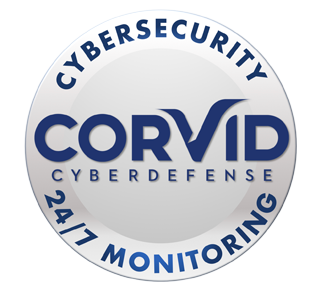 Retirement is a major transition point – as you go from saver to spender
Retirement is a major transition point – as you go from saver to spender
It’s common for people who are retiring to set their retirement date in either the springtime or the early summer. If you happen to be one of those lucky folks who are going to retire this year, then “Congratulations!”
But before you start planning your retirement party, make sure you do these four things if you’re retiring next year.
Don’t Leave Money on the Table.
As part of your employment, you may be entitled to “matching” and/or “profit-sharing” contributions from your employer to your 401(k) or other retirement plan. Since you typically need to be actively employed on the date the payment occurs to receive these funds, make sure you understand these terms prior to setting your final work date. You don’t want to miss out on “free” money!
For personal contributions, you may want to increase your contribution percentage to help you reach your annual maximum. Many employers cap the amount you can contribute to your plan from each paycheck. Since you may not be able to increase your contribution rate to 100% for your last couple of paychecks, you may need to instead increase your contribution percentage long before you retire to max out.
Your pension benefits are calculated based upon your earnings history. Consequently, you will want to align your retirement date with the timing of your annual compensation adjustment, because retiring before that date could cause you to miss out on including another year of higher compensation in your pension calculation.
On a similar note, it’s important to understand the timing and eligibility requirements for any bonus payments you may receive. Most people are required to be gainfully employed at the time the bonus is paid in order to receive it. If you do happen to leave before this date, you may be able to negotiate benefits as part of your retirement agreement.
Unused vacation days are typically paid out as part of your final paycheck. This can be a problem when you have an exceptionally large amount of time off, as the large lump sum could push you into a higher tax bracket. If you are planning to retire near the end of the year, take vacation time when you planned to retire, which may enable you to push a hunk of your remaining “vacation wages” into the next year and help minimize the ripple effect from a large, one-time payment.
Refresh Your Risk Profile.
Retirement is a major turning point in your life. It’s not just the transition from full-time work to either part-time or no work at all. It’s also the transition from saver to spender, where you face the reality of spending down your retirement nest egg.
In addition, your asset allocation may be more heavily weighted in stocks than you initially intended. Rebalancing your investments is a good idea during your working years, but it’s even more critical to keep things in balance once you retire. Since you’ll be drawing down your savings to finance your retirement, having too much of your portfolio in riskier assets like stocks leaves you vulnerable to a potential market downturn.
Before you rebalance, keep in mind that you may incur tax liabilities and/or transaction costs, and rebalancing does not assure a profit or protect against a loss.
Avoid Underpaying Your Taxes.
When you’re working, your employer automatically withholds taxes from your paycheck unless you opt out to reduce (or increase) this amount. In retirement, the opposite is true. By default, taxes are not withheld on your retirement income. Instead, you must opt in to have taxes withheld from your Social Security benefits, pension benefits and IRA/401(k) distributions. If you don’t have taxes withheld, estimated tax payments (federal and state) will likely become a necessary part of your life.
Imagine you and your spouse are planning on having $150K in retirement income ($50K of Social Security benefits, $25K of pension benefits and $75K of traditional IRA distributions). For federal taxes, you’ll need to pay about $5,500 every quarter ($22K annually) in estimated tax payments. Failing to do so will leave you with approximately $500 in underpayment penalties.
Opting in to have taxes withheld from your retirement income will help you dodge penalties from late payment on taxes and avoid the uncomfortable feeling of writing large checks to the IRS.
Talk With Your Spouse.
It’s worthwhile to have a good idea of how you’re going to spend your newfound free time in retirement. Many will give a “deer in the headlights look” when asked what an ideal day in retirement looks like both today and a year from now (after the initial retirement buzz disappears). They were unprepared for the prospect of converting 40+ hours “in the office” into 40+ hours of meaningful activity.
At the same time, they also lacked a plan for spending time with their spouse. After all, one or both of you have regularly worked for the past several decades. Retirement creates a brand new dynamic that removes the element of scheduled separation. Instead, you’re going to be stuck (blissfully) with each other. How will you spend that time? Volunteering? Working around the home? Traveling abroad?
Creating a plan for staying busy that both you and your spouse agree on will help ensure that your golden years are sweet, not bittersweet.
The Bottom Line
Taking the plunge into retirement is a monumental milestone. It’s important that you’re ready for it. Ask yourself and/or your adviser the following questions to help you evaluate your retirement readiness:
Do I have a robust understanding of my employer’s benefits plans?
What effective (non-marginal) tax rate should I use when setting up withholding on my retirement income payments?
Navigating your retirement journey requires that you and your adviser have confident answers to these questions. If you lack clarity, seek better guidance that ensures you are on track with your financial plan and the pursuit of your long-term goals.
Copyright © 2022 FMeX. All rights reserved. Distributed by Financial Media Exchange























 Megan Jones joined the ILG Financial team in 2020 as marketing director. Megan and her husband live in Fredericksburg, VA with their German Short Haired Pointer, Gus. Megan is a graduate of Longwood University and holds a degree in communications. Megan is the oldest of Dave Lopez’s three children and not only enjoys working alongside her father, but also with her cousin, Chase, who joined the ILG Financial team in 2020 as an advisor. Megan is also a fully licensed Life, Health, and Annuity agent. When not at work, Megan enjoys sitting on the back porch with family and friends enjoying food and music.
Megan Jones joined the ILG Financial team in 2020 as marketing director. Megan and her husband live in Fredericksburg, VA with their German Short Haired Pointer, Gus. Megan is a graduate of Longwood University and holds a degree in communications. Megan is the oldest of Dave Lopez’s three children and not only enjoys working alongside her father, but also with her cousin, Chase, who joined the ILG Financial team in 2020 as an advisor. Megan is also a fully licensed Life, Health, and Annuity agent. When not at work, Megan enjoys sitting on the back porch with family and friends enjoying food and music. Chase Lopez joined the ILG Financial team in 2020 as an advisor. Chase is a 2016 James Madison University graduate with a degree in management. Chase has been trained under the tutelage of Dave Lopez, who is not only the founder and managing member of ILG Financial, but also is Chase’s uncle and godfather. He also enjoys working alongside his cousin, Megan, who is Dave’s daughter.
Chase Lopez joined the ILG Financial team in 2020 as an advisor. Chase is a 2016 James Madison University graduate with a degree in management. Chase has been trained under the tutelage of Dave Lopez, who is not only the founder and managing member of ILG Financial, but also is Chase’s uncle and godfather. He also enjoys working alongside his cousin, Megan, who is Dave’s daughter. Amy Anderson joined the ILG Financial team in 2023 as the client relations coordinator. Her responsibilities include scheduling of appointments, annual check-up notifications, and annuity and required minimum distribution assistance. She is a graduate of Harding University with a degree in Computer Information Systems. Amy and her husband have two children and she enjoys reading, crocheting, music and spending time with her family.
Amy Anderson joined the ILG Financial team in 2023 as the client relations coordinator. Her responsibilities include scheduling of appointments, annual check-up notifications, and annuity and required minimum distribution assistance. She is a graduate of Harding University with a degree in Computer Information Systems. Amy and her husband have two children and she enjoys reading, crocheting, music and spending time with her family. Jessica Carson joined the ILG Financial team in 2018 as an agent. Jessica and her husband have four children, two dogs, 3 barn cats, 5 chickens, and three parakeets. She indeed loves her children and pets! When not at work, Jessica enjoys playing the piano and cello as well as traveling and spending time outside with her family, hiking, fishing, and boating.
Jessica Carson joined the ILG Financial team in 2018 as an agent. Jessica and her husband have four children, two dogs, 3 barn cats, 5 chickens, and three parakeets. She indeed loves her children and pets! When not at work, Jessica enjoys playing the piano and cello as well as traveling and spending time outside with her family, hiking, fishing, and boating. Terri Center joined the ILG Financial team in 2019 as client services manager. She handles client records, application processing, and gathering information to provide a professional and friendly experience with all of our clients. Terri is a graduate of Oakland University. She is married and has two children. She enjoys hiking, family time, and puzzle challenging video games. She also likes to share her creativity in her canvas paintings and sewing projects.
Terri Center joined the ILG Financial team in 2019 as client services manager. She handles client records, application processing, and gathering information to provide a professional and friendly experience with all of our clients. Terri is a graduate of Oakland University. She is married and has two children. She enjoys hiking, family time, and puzzle challenging video games. She also likes to share her creativity in her canvas paintings and sewing projects.